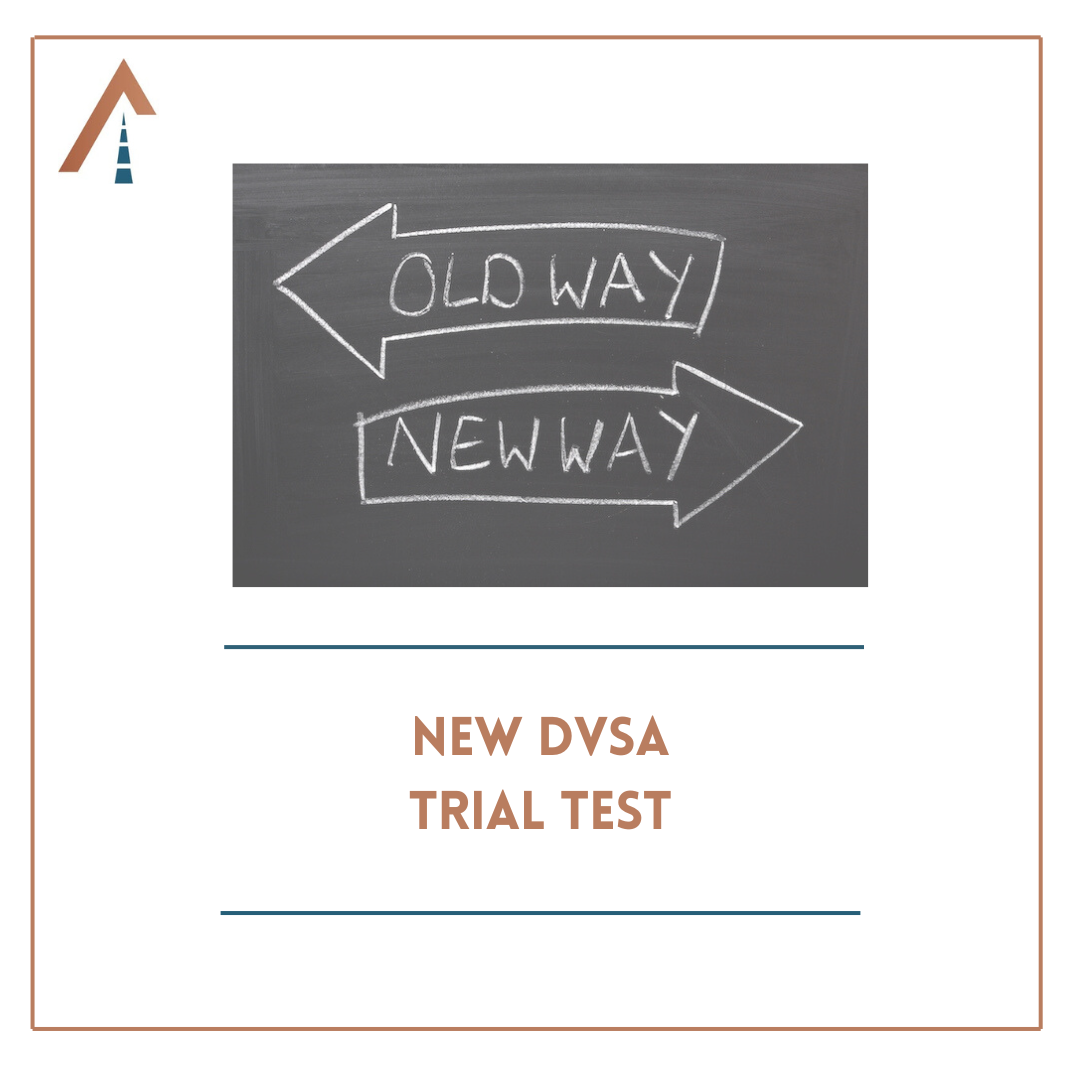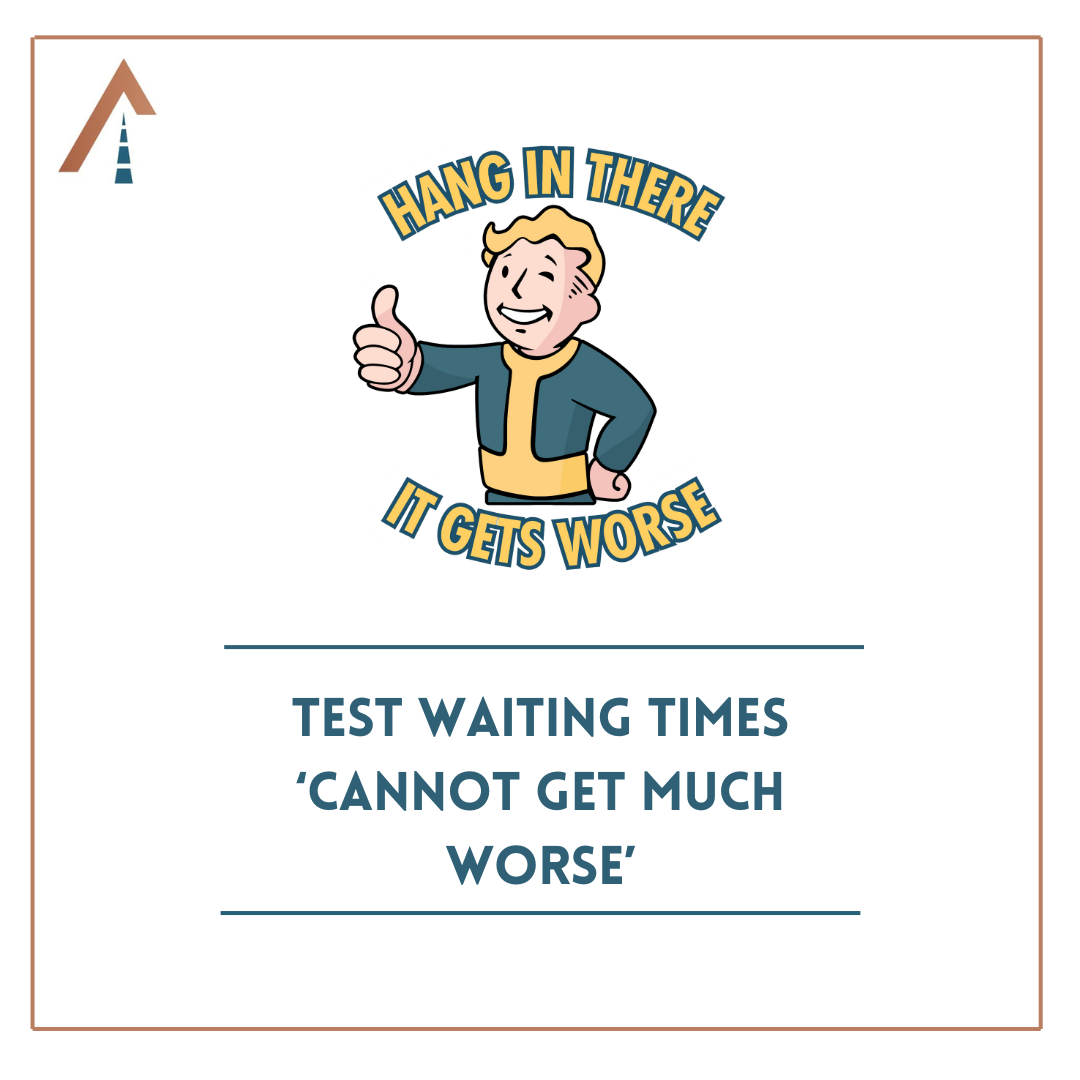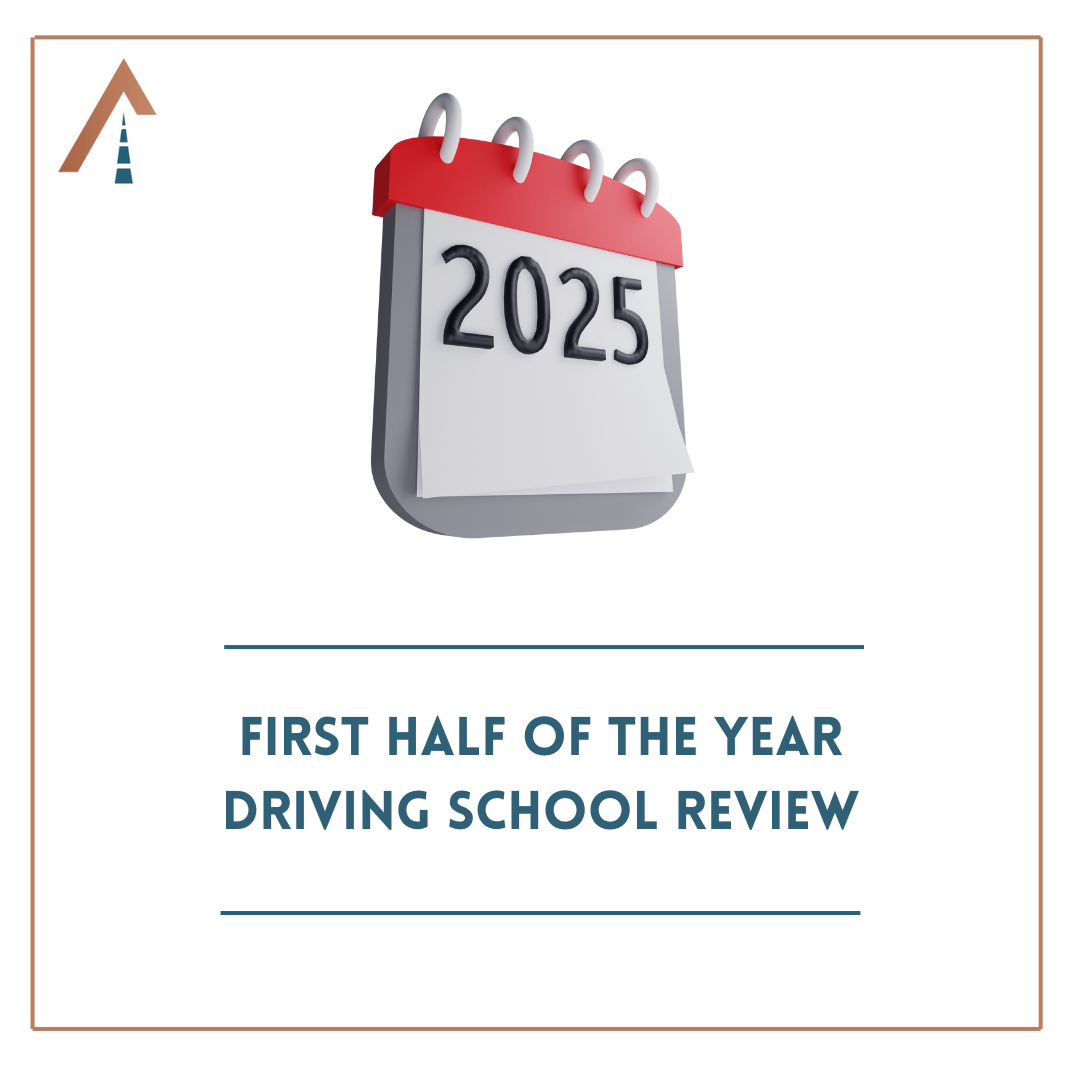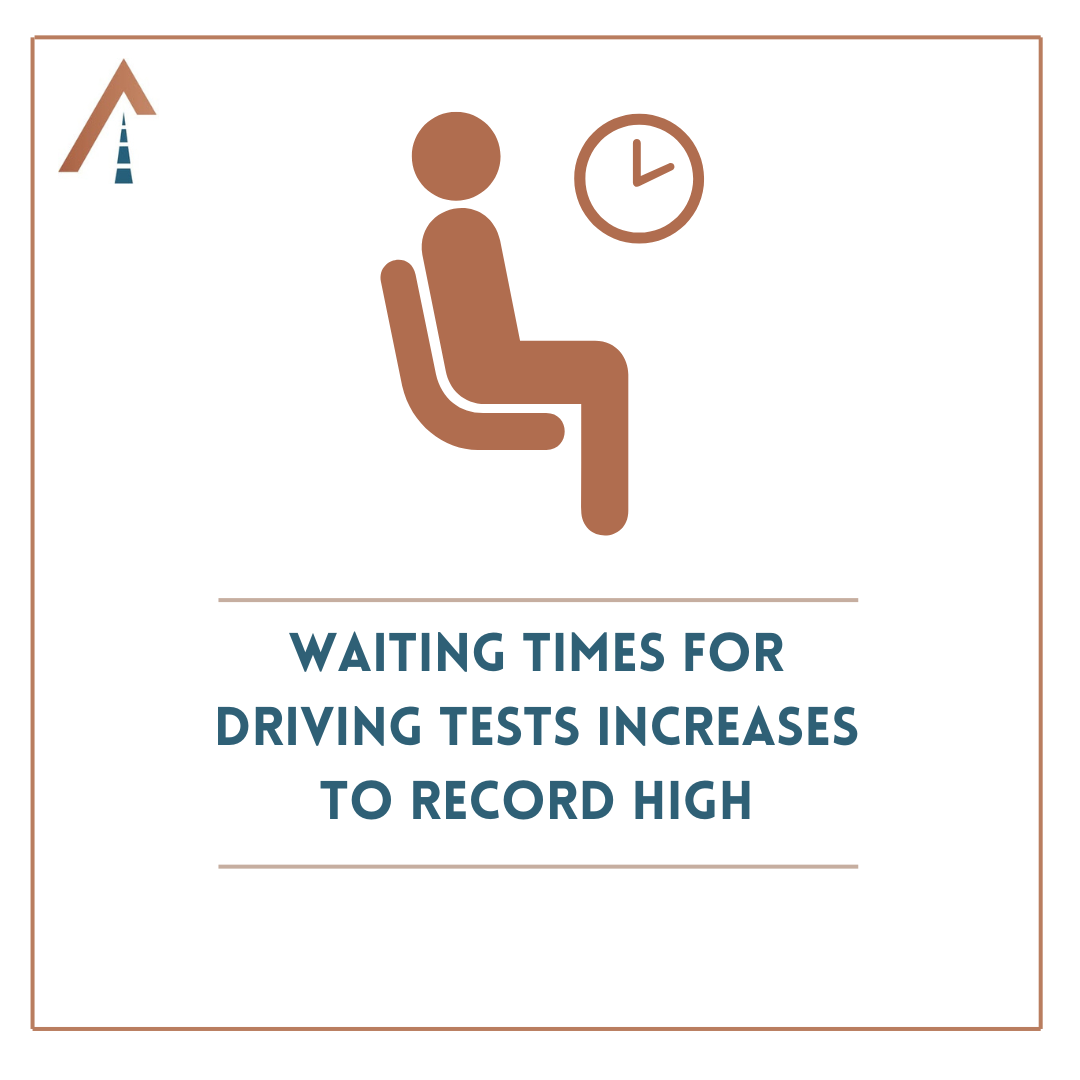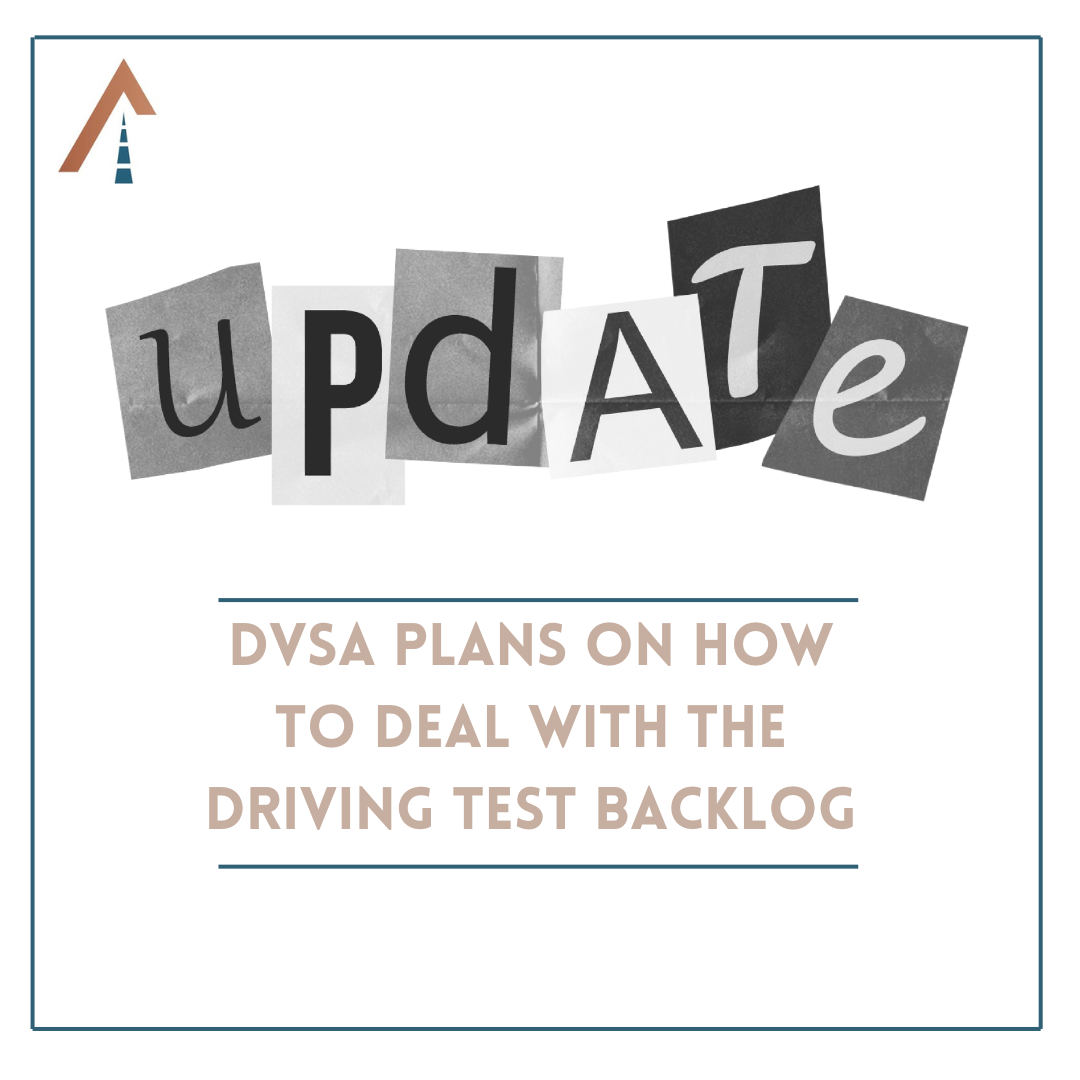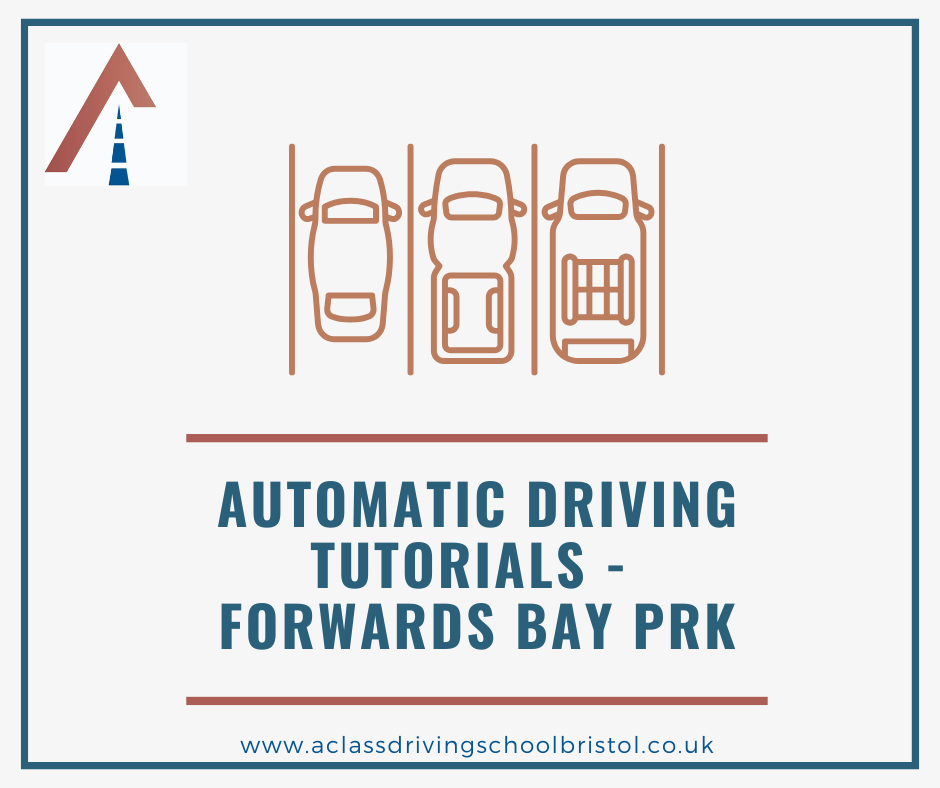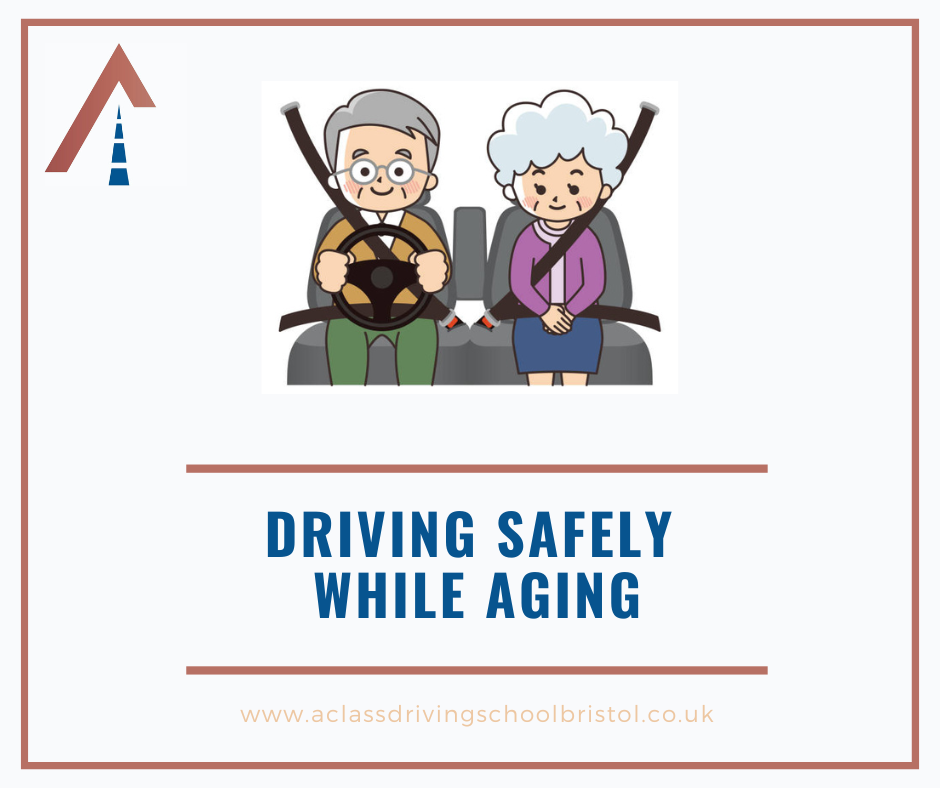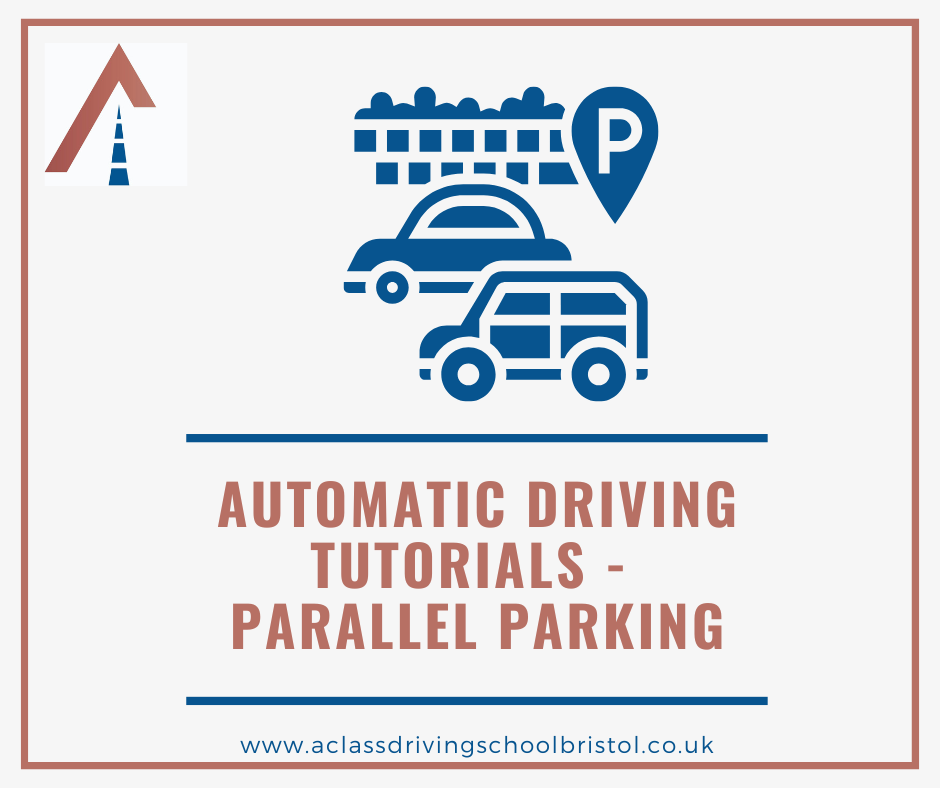Roundabouts - Automatic tutorial
Online driving tutorial - Roundabouts
Without a doubt, roundabouts are the most requested thing to practise by students. Only by exposing yourself again and again will it make sense. Do not expect to prefect roundabouts instantly, be patient. Depending on the roundabout size, you will be expected to do slightly different things by the examiner.
Mini Roundabouts
Dealing with roundabouts is just like approaching and emerging. We're hoping to go first time, like with approaching, so have this routine at the forefront of your mind. It's the MSM routine, arriving at 10/12 mph with 3 to 4 car lengths to spare. This is the key to roundabouts. The slow arrival with everything done. So with that 12+ meters to go you can really focus on the looking part of the MSM routine.
This is when I introduce student to another acronym; LADA. Look, Asses, Decide, Act.
We look to the right entrance first off as this is the car we need to give way to.
We asses to see if there's danger.
Make a decision. If there's a car, we Act by stopping. If there isn't anything, we Act by going.
This is the basic premise for all roundabouts. Sadly, it's not that simple. If there's a car on your right, you might not have to stop. Look at their signal and position. We might be able to go.
If it is crossing your path, there's still a chance we can go because other cars coming from other directions might be crossing their path, stopping them from entering the roundabout, giving you the opportunity to proceed.
It'll be confusing to start with. In time you'll be able to work out who's crossing who's path and who needs to give way. The slow approach with everything done with 3/4 car lengths to spare gives you the time to piece is all together.
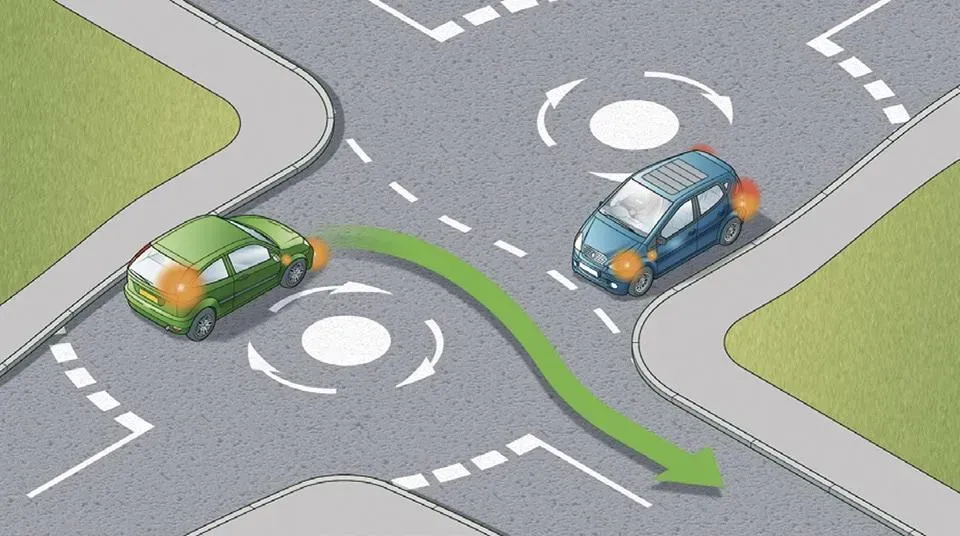
Double Mini Roundabouts
Treat each one individually using the information above. In the image below you can see dashed lines between the roundabouts, this is where you would need to stop for traffic on the second roundabout if they were to be crossing your path.
An extra point for consideration is whether your final exit is clear; you don't want to be sitting on the roundabout clogging it up. The blue car in the image has to give way to the green car as at the second roundabout this car is coming from his right.
I'd wait until the learner is happy with single ones before attempting these. I think these are good practise for looking and using blockers and building anticipation skills.
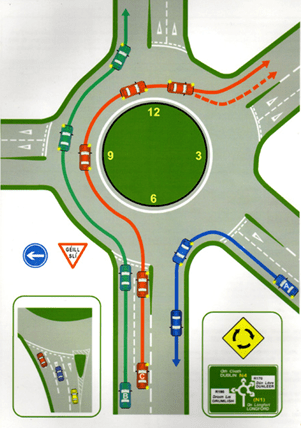
Larger Roundabouts
On approach you may see a warning triangle but will more often than not see large diagram giving location information. It's vital to observe these and to formulate a plan on how to deal with the junction in advance.
These roundabouts often have more than one lane approaching them and the most important thing is to maintain lane discipline. MSM on approach, remember LADA and be slow enough to get in the observations you'll need to safely deal with the junction.
Turning left
(The blue car on the image above) - Once again you'll need your M-S-M routine. This sequence is assuming it's clear in front of you and you're looking to go first time. Check your interior mirror, left door mirror, signal to the left, stay in the left lane, reduce your speed to 10/15 mph and be in 2nd gear and off the clutch with 4 car lengths to spare.
Look to the right for traffic coming onto the roundabout or from behind the floral display (or what ever else is in the middle of the roundabout itself).
The big difference
What makes these harder than the mini roundabouts is that cars could already be on the junction, but hidden.
When cars come around from the dark side of the roundabout, depending on their position you'll need to do one of two things. If they're in the outside lane, we go. The inside lane, be careful. For beginners, I'd recommend stopping. The inside lane is where cars could come around and cross your path. They might straighten up and leave, and you'll be able to identify this in time. But for now, practise stopping.
Once into the new road, cancel your signal if it hasn’t done so automatically and check your mirrors once you start making progress.
Going straight
(The green car on the image) - Unless told otherwise by road markings or road signs, stay in the left hand lane. At some very large roundabouts there could potentially be 3 lanes on approach to the roundabout, in which case, you may need to be the middle lane. Look for information on where you need to be. This could be in the form of a sign, or arrows on the ground.
Check your interior mirror and left door mirror, no signal, reduce your speed to 10/15 mph. Look to the right for other road users and if it's clear then emerge. The most important thing here is maintain lane discipline, stay to the left!
Once you have passed the penultimate exit you will need to let people know what your intentions are. Check your interior mirror, left door mirror, signal to the left and take your exit. Once into the new road, a quick mirror check and make progress.
Turning right
(The red car on the image) - This can be more daunting. On approach check your interior mirror and this time right door mirror to see what is potentially on your right or to see if the right hand lane is free. Signal to the right, your position will have to change this time, drift into the right lane/keep the hazard lines on the middle of the road down the right flank of the car.
Your speed once again will need to be reduced to 10/15 mph. A low speed will be very useful here as you have so much to do whilst leaving.
Look to the right for other road users and if clear, emerge into the roundabout, however, this time you'll need to cross over into the lane closest to the roundabout itself.
Keep the roundabout on your right hand side until you have passed your penultimate exit then you'll need to let people know behind you that you intend to come off.
Mirrors first, interior and left door mirror, then signal to the left. Don't try this until you have seen your exist and you begin to take the turn off. Once you have completed the first set of checks and applied the signal, your wheels should be fairly straight.
The extra check
Usually you'll be wanting to come off in a straight line (the solid red line in the image), but before you start to cut across the lane you MUST check your mirrors again for cars on your left flank. Especially when coming from and into a dual carriageway section of road.
This is why going slow is so crucial. You could very well have a car sitting next to you wanting to take your exit and in the lane you're about to move into.
If no car is there, then take your exit and come off in the left. If there is a car there, then you'll need to exit in the right-hand lane (the dashed red line in the image). If you do come off in this lane, don't panic, you're allowed to be here.
However, you will need to make progress and at some stage get back into the left-hand lane, making sure you check your mirrors and act sensibly on what you see before doing so.
Should I stay or should I go?
It's a tricky one. This is why approaching at 10/12/15 mph is the secret to unlocking the roundabout mystery. It gives you time to LADA (Look Assess Decide Act).
The golden rule here is not to make anyone slow down who is already on or coming onto the roundabout from the right. Your view of the roundabout is not amazing and often other divers signal incorrectly or not at all, so what we're looking for here is the position of other road users.
When looking to the right just before we get there, if there are cars in the outside lane (the lane furthest from you) and you can't see where they have come from (so not the right exit which we can see) they are going to leave, NOT cross your path and it's clear to go. If a car is on the inside lane, closest to the roundabout, then we wait. This car is going to cross your path and we have to give way to them.
Through exposure to these types of junction, you'll gain experience and soon you'll understand the movements of all the vehicles on the roundabout. It comes in time. Don't stress if you haven't grasped it after the first few times of coming across these junctions.
Other cars moving at high speeds doesn't help and in fact slows the progress of everyone else down. Another reason for being slow on the junction, it oddly helps the traffic flow better.
Watch the video for more help on roundabouts, especially turning right and the timings.


